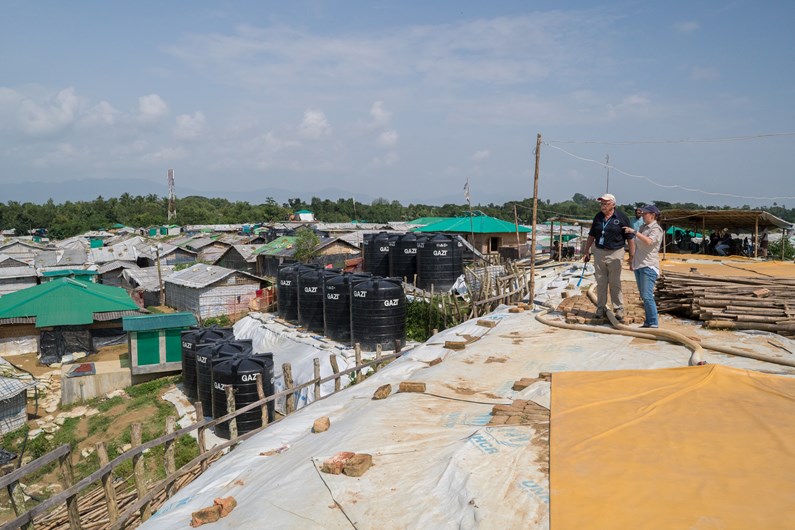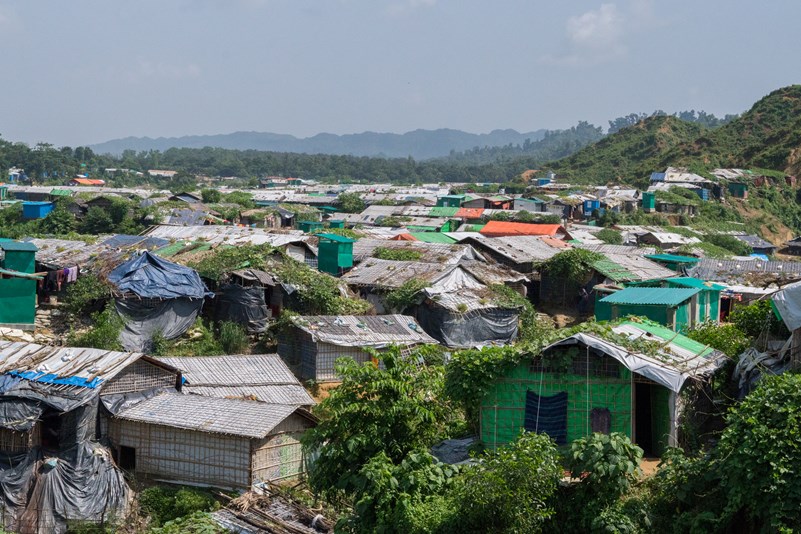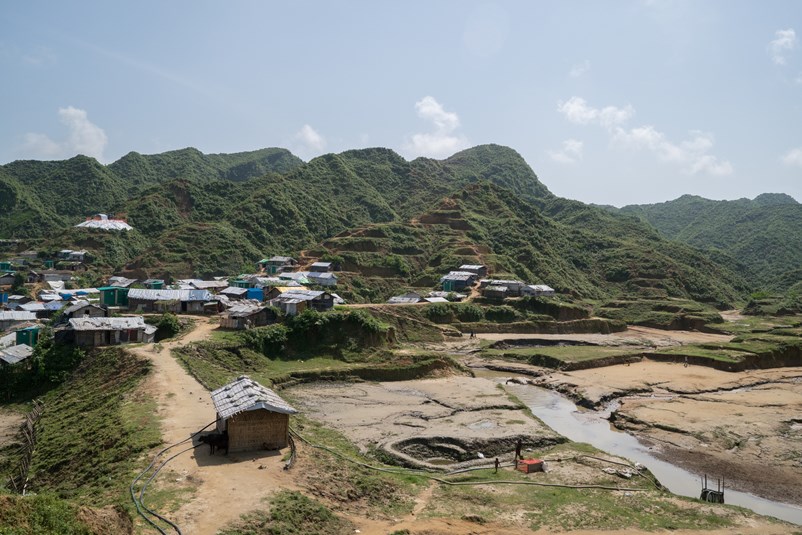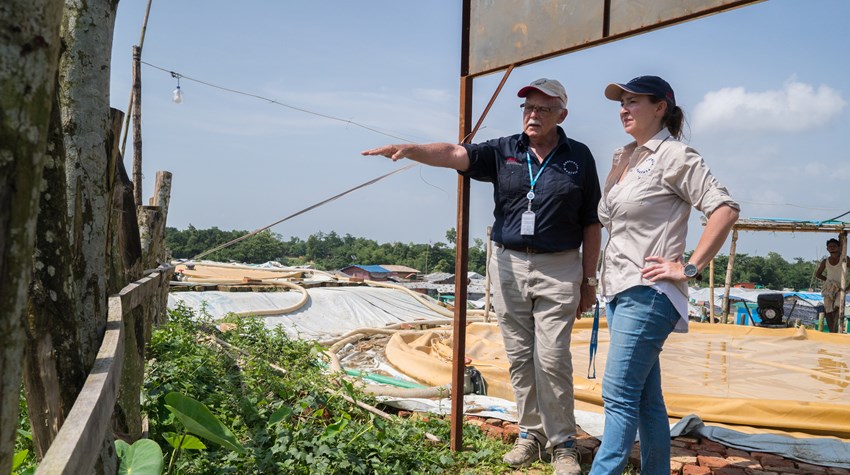August marked 12 months since Bangladesh saw an influx of an estimated 688,000 Rohingya refugees into Cox’s Bazar escaping escalating violence in Myanmar. This added to an estimated 200,000 Rohingya already settled in the area, leaving approximately 900,000 displaced people inhabiting a space of just 12 square kilometres.
Camilla was deployed by RedR Australia, through the Australia Assists program, in August to the United Nations High Commission for Refugees (UNHCR) as a Water, Sanitation and Hygiene (WASH) Officer.

Camilla with fellow Australia Assists deployee Paul, discussing plans for the re-design of the main water reservoir in Teknaf camp in Cox's Bazar, Bangladesh. Photo credit: Patrick Shepherd, RedR Australia.
Over her three-month deployment, Camilla focused on potential water sources and storage locations, including the design of a reservoir to service the refugees in Teknaf – the southern district of Cox’s Bazar. To help minimise, and potentially eliminate water trucking during the dry period, Camilla helped conduct research that found five canals which can be dammed to store water. These dams are located outside the camp, with water being transferred to the treatment plants alongside the reservoir.
“The camps in the north have a lot of access to groundwater so they use deep boreholes for safe water, while the ones in the south don’t, leaving the refugees and host communities in these areas to rely on surface water. The reservoir needs to provide water to as much of the Teknaf area as we can, which is why we’ve supplemented it with damming canals,” Camilla said.
If there is no rain over the next five months, Camilla said at a minimum the reservoir has the capacity to provide up to 20,000 people with 20 litres of water per person per day. However, she is unsure how deep it will end up being, given it is currently being dug by hand.
"They may only be able to excavate a metre, so it might store enough for 20,000 people or, they might excavate three metres and store enough for 40,000. It depends how much they can do in the timeframe.”

The densely populated Cox's Bazar settlement is home to more than 900,000 displaced Rohingya people, escaping escalating violence in Myanmar. Photo credit: Patrick Shepherd, RedR Australia.
Another challenge for Camilla in the design process was the restriction on building permanent structures, given all new construction must be built only on a temporary basis.
“You need to think of materials you can use that are strong enough to hold the water in, but are classified as temporary, rather than permanent. The design we ended up doing is quite unusual as there is currently no vehicle access to the reservoir and everything has to be carried in manually, so I spent a few days in the field with local staff who are managing the construction, explaining how it can be built and how it needs to work.”

The main reservoir in Teknaf camp in Cox's Bazar. Photo credit: Patrick Shepherd, RedR Australia.
During the design process, Camilla also undertook community focus groups regarding the long-term design of the reservoir so that she and her team could implement all the things they were interested in. “We did eight focus groups for the reservoir, four male and four female, to see what the community actually wanted as part of the reservoir, for example if they wanted a bathing area or a fishing pond next to it.” Camilla said.
“I was surprised with how little they wanted actually, and the main thing was safety, and for the whole reservoir to be fenced. ”Building the technical capacity of local staff was another important aspect of Camilla’s deployment as the construction process didn’t begin until Camilla’s final day in field.
Now that she has returned home, local UNHCR WASH staff continue the construction. “It’s cyclone season so it’s pouring with rain and they’ve got 100-200 people out there manually constructing the whole thing. But the rain is a good thing – we need it so there is water that can actually be caught in the reservoir,” Camilla said. “Working with local staff to finish the designs was good, but now to see it actually implemented and working will be even better. I get sent photos of the construction and I reply saying that I want to see more and see how it’s going,” Camilla laughed. “In an emergency, everything is important, but because water is so essential to life, it is a very interesting and rewarding field for me to work in.”



